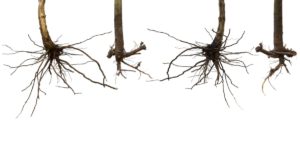Basil is a delicious, versatile, and easy-to-grow garden herb. But does basil come back every year?
Unfortunately, basil does not come back every year by itself. There is a bit more work required to have basil every year than just letting it grow back on its own. Nevertheless, you can have it every year by just replacing it.
Basil is one of the easiest herbs to grow in your garden once spring has sprung and the soil has warmed up. Keep on reading to learn more about basil and how it develops.
Does basil come back every year?

Basil will come back, year after year, so long as you are involved in the planting and care of the plant. However, it will not grow back every year by itself.
Basil is easy to grow and low maintenance. It’s native to warm and somewhat tropical Mediterranean environments. It thrives in full sunlight and rich soil. Gardening experts recommend that basil receives between six and eight hours of sunlight per day. This will help develop the most flavorful leaves.
Ideally, a basil plant will have lots of room for its root system to grow. Basil roots enjoy a good soaking. But they should never be overwatered and waterlogged. If you are growing basil in containers, make sure your basil plant is never sitting in water.
Is basil an annual or perennial?

Basil (Ocimum basilicum), also known as sweet basil, is an annual plant. Basil is not a perennial.
An annual plant requires planting every year. You can plant basil seeds directly into the soil outdoors, or grow medium if growing in containers. You can also germinate basil seeds indoors ahead of time and then transplant them to the outdoors once they’ve developed.
Perennial plants, on the other hand, do return every year. During the winter, perennial plants can be pruned back and left to go dormant. Their roots will survive the winter and then regrow when the Spring rolls around once again.
It should be mentioned that in some locations, particularly those with extraordinarily mild and frost-free winters, it is possible to grow a basil plant as a short-lived perennial. Basil that is grown in warm environments or kept and cared for indoors during the winter may survive for up to two years.
Does basil grow back after I cut it?

Basil is a very resilient herb. It will grow back after you cut it. In fact, it will often grow back bushier and healthier than before! So long as you do it properly and avoid a few beginner’s mistakes.
When harvesting small amounts of basil, harvest evenly across the plant from top to bottom and avoid overharvesting in one location.
If you harvest by hand, pinch the leaves off the stem with your fingernails, and be careful not to damage the delicate stems.
If harvesting large amounts of basil, it’s best to harvest from the top. Remember to avoid cutting more ⅓ of the plant at any one time.
When harvesting basil, it’s best to cut above the leaf node or leaf pairing. The leaf node on the stem is where the shoots branch off. Cutting above the leaf node will preserve the shoots and encourage them to grow back even fuller than before.
Remember, if you are using shears to cut your basil, make sure to sanitize them beforehand to avoid spreading any diseases or pests to your plants that may kill it.
Should I cut back basil in winter?

Yes, you should cut back your basil in the winter. In fact, you should do it before the winter to be more precise.
If you live in an area with colder winter temperatures, you will want to cut back your basil before the first frost. The reason is that basil is not hardy. It will not survive cold temperatures.
So before the winter gets too cold, it’s best to cut back your basil at the base and harvest all the leaves. That way, they will not go to waste. Otherwise, the leaves will wilt and become inedible. And that would be a terrible waste of all your hard work.
If you are wondering what to do with a bulk supply of basil, we recommend you air-dry it. Air-drying basil is a simple and effective way to preserve your basil and continue to enjoy it all winter long.
- Cut back your basil. Wash it thoroughly and then set it to dry.
- Arrange the stems into little bunches tied together with string.
- Hang up the bunches by the stems in a cool and dry location.
- Allow 5 or 6 weeks for the basil to dry out completely.
- Separate the dried basil leaves from the stems and keep them handy for whatever recipe calls for basil.
Final thoughts
Basil will grow back every year so long you plant it. In other words, basil is an annual plant. It will not regrow by itself. To grow basil every year, you will need to plant basil seeds or transplant store-bought seedlings into your garden.
One of the best ways to grow basil every year is to start it indoors ahead of time. We love watching the seeds germinate and mature into seedlings. It’s a fun winter-time activity. Plus, this drastically shortens the basil’s growing cycle outdoors. That means more basil for you at a quicker pace.
You can plant seeds in small containers and keep them indoors in a sunny and warm window, just avoid a window that gets cold drafts. Then, once the last frost has passed for the season and the soil is warm enough, the tiny seedlings will be ready to be planted outside in the garden.
The only thing that could make basil better was if it was a perennial. But then again, that would take away all the fun of planting and growing it! We love basil just how it is – and we hope you do too.



